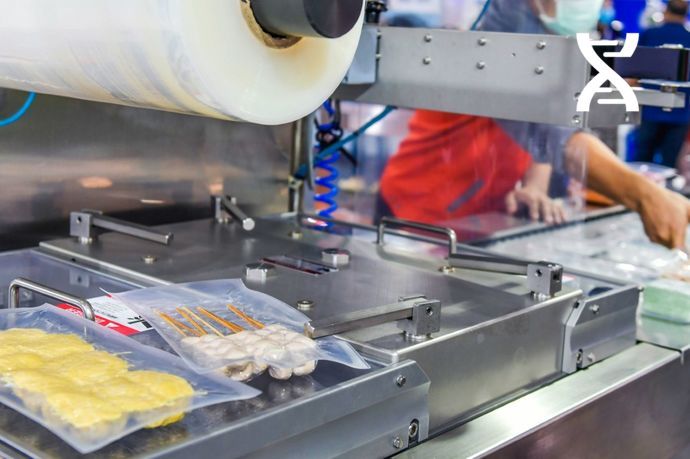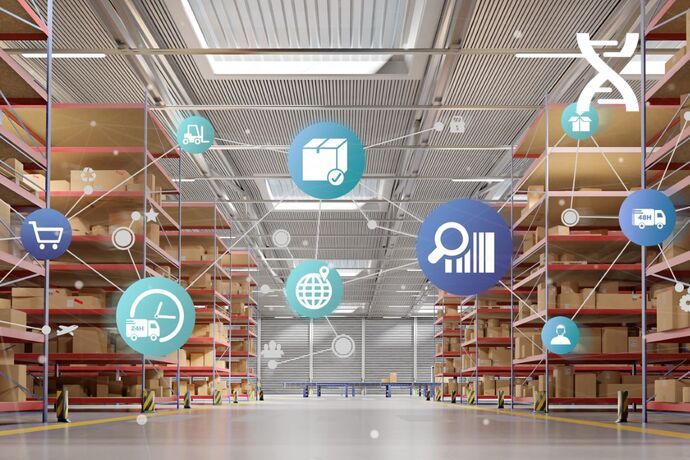Why Track and Trace, and how to implement it?
The increasing worldwide development of goods has always raised the issue of the traceability of their intended itinerary, whether to meet sanitary (for perishable products such as fruit, vegetables or meat) or regulatory (medicines, chemicals, GMOs, etc.) requirements, but now also to meet the demands of end consumers for rapid dispatch, and the just-in-time flows required by market constraints Similarly, goods often find themselves in the hands of several forwarding agents in varying environmental circumstances, increasing the risk of loss, counterfeiting or alteration Thus, the term Track refers to the history, use or location of the product, while the term Trace evokes the idea of tracking and proof of its departure and arrival.
Traceability enables a product or service to be tracked and traced from its creation/production to its destruction/consumption. Traceability as such is not defined by law, but by the international standard ISO 8402, which provides information on the origin of marketed products
Originally a simple logistical concept, it has now become a legal obligation, notably in France's agricultural sector, in 1969 with decree n°69-422, which requires the identification and registration of sheep, cattle and goats, with the aim of improving breeds.
This procedure, which was not yet called traceability, was generalized in order to eradicate zoonoses more effectively, and the system was standardized in 1995. Subsequently, European Council Regulation no. 820/97 of April 21, 1997 established a system for the identification and registration of bovine animals, in an attempt to stem the fall in consumption at a time when consumer confidence had been seriously undermined by the Bovine Spongiform Encephalopathy (BSE) crisis, also known as mad cow disease. As a result, manufacturers, distributors, consumers and public authorities were convinced of the need to organize the traceability of agricultural products
Consumers see traceability as a guarantee of the quality and origin of the products they buy. Farmers see it as a form of labelling that not only enhances the value of their products, but also protects them. On the other hand, for some less-developed countries, the obligation of traceability can be a constraint, or resemble a kind of protectionism that denies them access to Western markets. However, traceability could be very interesting in the context of promoting forms of fair trade, guaranteeing both the environmental and societal conditions of production.

How do you set it up?
The system can be supported by calculating and reporting the position of vehicles and containers with the goods concerned via GPS and/or beacons, with the data stored in a real-time database. This approach enables a consistent representation of subsequent status reports The other approach consists of reporting the arrival or departure of the good, by recording its identification, together with the time-stamped location of the same record; this makes it possible to check the consistency and completeness of the data. This is the method used to track parcels by market-leading shippers such as Deutsche Post, Royal Mail, United Parcel Service and FedEx.
To this end, the international standards organization EPC global has ratified the EPC network standards (in particular the EPC standard for information services EPCIS), which codify the syntax and semantics of supply chain events, as well as the secure method of selectively sharing supply chain events with trading partners. These tracking and tracing standards have been used in successful deployments across a wide range of industries, and there is now a wide range of products certified as compatible with these standards.
In addition, in response to a growing number of recall incidents (food, pharmaceuticals, toys, etc.), a wave of software, hardware, consultancy and systems publishers has emerged in recent years to offer a range of traceability solutions and tools for industry. Radio frequency identification and barcodes are two technological methods commonly used to ensure traceability.
RFID is synonymous with tracking and tracing solutions, and has an essential role to play in supply chains. RFID is a code-carrying technology, and can be used in place of a barcode to enable reading without line-of-sight. RFID deployment was previously hampered by cost limitations, but its use is increasingly being adopted by industry professionals. As parcel tracking technologies have evolved, it has also become possible to increase the amount of information and measurements returned on a parcel, and to report alongside its location also temperature, humidity, pressure, acceleration, elevation and light exposure at different times. which are important for sensitive, literal and figurative, or perishable contents.
The barcode is a common and cost-effective method used to implement traceability at the level of the item itself and its virtual data. Barcodes have undergone their own development, from non-specific 1D linear barcodes, to 2D matrix barcodes and specialized augmented postal codes such as the Alphanumeric Postal Encoding Technique (PLANET), the Digital Postal Encoding Technique (POSTNET) and the Intelligent Mail barcode, and other Electronic Product Codes (EPC-s). Variable data in barcode, numeric or alphanumeric code format can be applied to packaging or labels. This secure data can be used as a pointer to traceability information, and can also be correlated with production data such as time-to-market, and intrinsic product quality.
As for packaging converters, they can choose between three different classes of technology for printing barcodes: Inkjet systems, capable of printing high-resolution images at high speed, both in-line and off-line
Secondly, laser marking can be used to ablate a coating or to bring about a color change in certain materials. The advantage of lasers is their precision of detail and high speed for printing characters, as well as the absence of consumables. However, some materials do not accept laser marking, and some colors, such as red, are not suitable for bar code reading.
Finally, there's thermal transfer or direct thermal. For low-speed, off-press applications, thermal transfer and direct thermal printers are ideal for printing variable data on labels.
From the consumer's point of view, they can access websites to trace the origin of their purchased products, or to find out the status of their shipments. All they have to do is type in the item's transmitted code on the tracing website, and the information is instantly displayed. This can also be done via a smartphone by taking a photo of a 2D barcode, which then opens a web address that authenticates the product.
Web-based parcel tracking has been used since the early days of mass Internet adoption to automate customer service, and as a cheaper alternative to telephone call centers for tracking the status of a parcel in a matter of minutes. The service quickly became popular: for UPS, the number of packages tracked on the Web rose from 600 per day in 1995 to 3.3 million per day in 1999. Online package tracking became available to all major transport companies, and was enhanced by the emergence of websites offering consolidated tracking for different factors. With the rise of smartphones, mobile parcel tracking applications enable tracking information to be sent to customers' cell phones. Thanks to improved data processing, e-mail programs automatically detect tracking numbers in messages and receipts to print out the package's real-time location.






